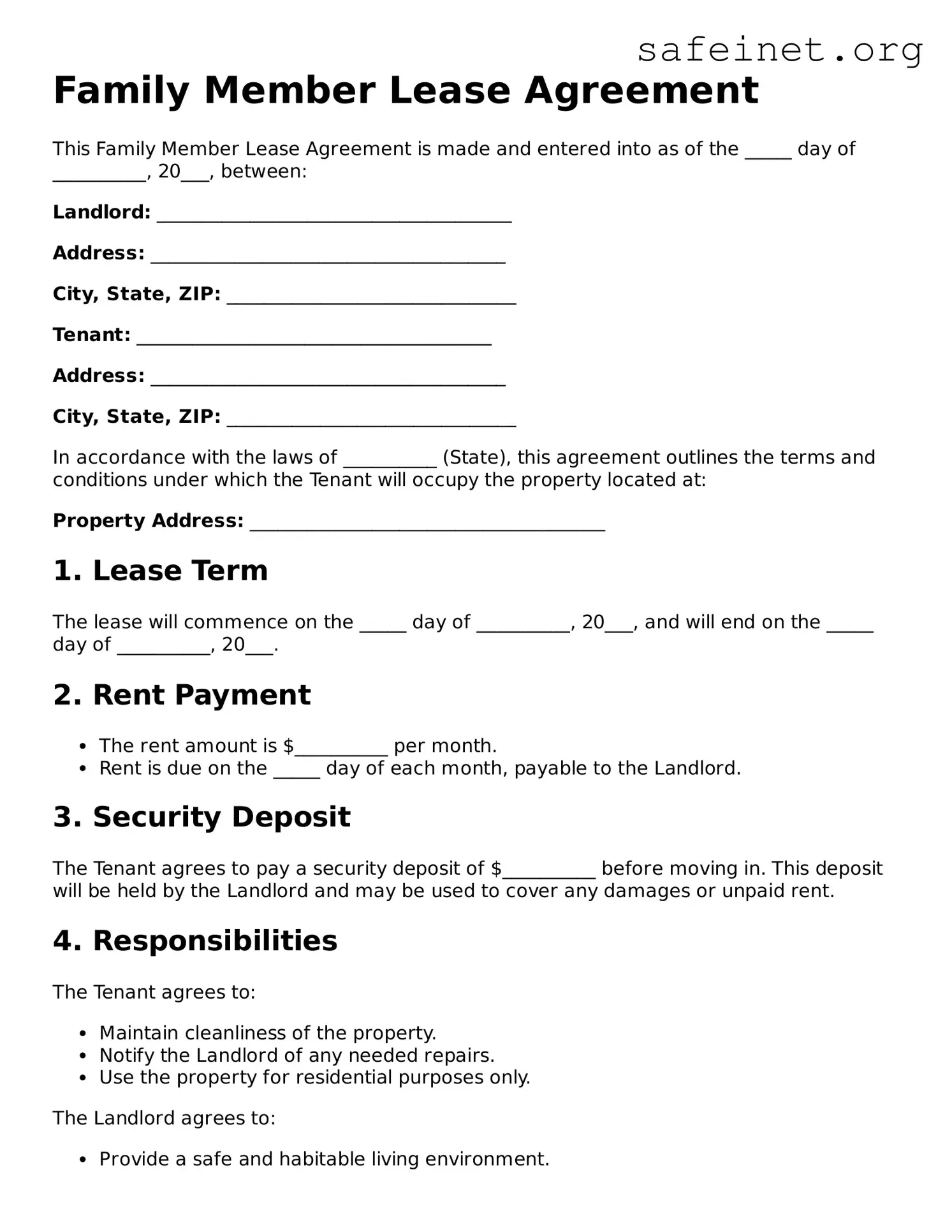What is a Family Member Lease Agreement?
A Family Member Lease Agreement is a specific type of rental contract between a landlord and a family member. It outlines the terms of the rental arrangement when a family member moves into a property owned by another family member. This agreement can help clarify rental expectations and protect the rights of both parties involved.
Why should I use a Family Member Lease Agreement instead of a verbal agreement?
Using a written agreement is essential, even among family members. A Family Member Lease Agreement provides clear documentation of the terms, which can prevent misunderstandings or disputes later on. It outlines the rental amount, lease duration, and responsibilities, ensuring that both parties are on the same page.
What should be included in a Family Member Lease Agreement?
The agreement should include key details such as the names of both the tenant and landlord, the property address, the rental amount, payment due dates, the duration of the lease, responsibilities for maintenance and utilities, and procedures for terminating the lease. It may also include clauses addressing behavior expectations and house rules.
Can I charge my family member rent?
Yes, you can charge your family member rent. In fact, it is advisable to do so, as it establishes the tenant's commitment to the agreement. Charging rent ensures clarity around the financial arrangement and can help maintain healthy family relationships by treating the arrangement professionally.
How does a Family Member Lease Agreement differ from a standard lease?
While many elements of a Family Member Lease Agreement are similar to a standard lease, the primary difference lies in the relationship between the parties. A family member lease may provide more flexibility and understanding regarding rules and payment terms, but it still serves as a formal contract that is legally binding.
What happens if one party wants to terminate the lease early?
The Family Member Lease Agreement should specify the process for terminating the lease early. Generally, there may be a notice period required, and any stipulations regarding penalties or the return of security deposits should also be clear. This helps protect both parties if unexpected circumstances arise.
Is it necessary to have the Family Member Lease Agreement notarized?
It is not typically required to notarize a Family Member Lease Agreement. However, having it notarized can add an extra layer of credibility and protection. If disputes arise in the future, a notarized document can serve as stronger evidence in legal situations.
What should I do if there is a dispute between family members regarding the lease?
If a dispute arises, it is important to refer back to the Family Member Lease Agreement for guidance. Open communication is key, and discussing the issue directly can help resolve misunderstandings. If resolution is not possible, mediation or legal consultation may be necessary to achieve an amicable solution.
